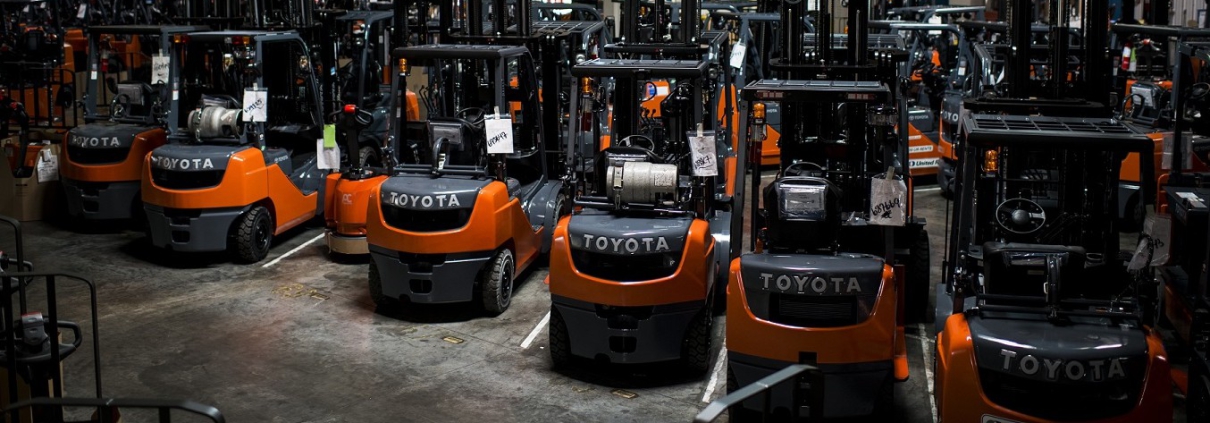36 Volt Forklift Battery – Advantages, Limitations, and Selection Guide
Forklift batteries are a critical component of warehouse and industrial operations, powering electric forklifts that move goods efficiently. Among the various options, the 36 volt forklift battery is a popular choice for mid-sized forklifts, offering a balance between power, cost, and performance. In this guide, we explore what makes 36V batteries unique, their advantages and limitations, and how to select the right battery for your needs.
What is a 36 Volt Forklift Battery?
A 36 volt forklift battery typically consists of three 12V cells connected in series. These batteries can come in various chemistries, including:
- Lead-acid: Traditional, cost-effective, but heavier and requires regular maintenance.
- AGM (Absorbent Glass Mat): Maintenance-free lead-acid variant with improved safety and spill resistance.
- Lithium-ion: Lightweight, fast-charging, longer lifespan, and higher efficiency.
36V batteries are commonly used in mid-sized forklifts, serving warehouses, logistics centers, and industrial environments where moderate lifting capacity and operational efficiency are needed.
🔗 Explore 36V batteries forklift options.
Advantages of 36V Forklift Batteries
- Balanced Power and Energy
- Offers sufficient power for medium-duty forklifts, providing stable traction and performance without overloading the system.
- Cost-Effective
- Cheaper than higher-voltage systems like 48V, making it a practical choice for mid-range operations.
- Learn more about forklift battery cost.
- Flexible Charging
- Charging times are reasonable, and charging equipment costs are lower compared to high-voltage systems.
- Wide Applicability
- Compatible with most mid-sized forklift fleets and easily integrated into existing warehouse operations.
Limitations of 36V Forklift Batteries
- Limited Power for Heavy Loads
- May not provide enough traction and runtime for large or heavily loaded forklifts.
- Shorter Lifespan Under High-Frequency Use
- Lead-acid 36V batteries may degrade faster if used in continuous, high-intensity operations.
- Limited Upgrade Flexibility
- Integrating advanced battery management systems (BMS) or fast-charging infrastructure is easier with higher voltage systems.
Comparing 36V to Other Voltage Systems
| Voltage | Advantages | Limitations | Typical Applications |
| 24V | Low cost, small size | Limited power, less efficient for mid-load tasks | Small warehouses, light-duty forklifts |
| 36V | Balanced power and cost, suitable for medium loads | Not ideal for heavy-duty operations, shorter high-frequency lifespan | Mid-sized warehouses, logistics, industrial lifting |
| 48V | High power, long lifespan, supports heavy loads | Higher cost, larger equipment requirements | Large warehouses, heavy-duty forklifts, fast-charging systems |
The 36V system is often the “sweet spot” for mid-range forklifts, balancing performance, cost, and operational efficiency.
Choosing the Right 36V Forklift Battery
When selecting a 36 volt forklift battery, consider the following:
- Capacity (Ah): Ensure the battery meets the forklift’s energy requirements and runtime expectations.
- Cycle Life: Check the expected number of charge-discharge cycles.
- Battery Chemistry: Lithium offers longer lifespan and faster charging but at higher upfront cost; lead-acid is cheaper but heavier and requires maintenance.
- Size and Weight: Verify battery dimensions fit the forklift compartment.
- Compatibility: Match the battery voltage and connector type with the forklift model.
🔗 Explore our 36V lithium and lead-acid forklift batteries: batteries forklift.
Charging and Maintenance Tips
- Proper Charging
- Use a compatible charger and follow the manufacturer’s recommended charge profile (constant current/constant voltage).
- Avoid overcharging or deep discharging to extend battery life.
- Routine Maintenance
- For lead-acid batteries: Check electrolyte levels, clean terminals, and equalize charge periodically.
- For lithium batteries: Monitor battery management system (BMS) alerts and avoid extreme temperatures.
- Safety Considerations
- Ensure adequate ventilation in battery storage areas.
- Handle batteries with proper safety equipment to avoid short circuits or chemical exposure.
Conclusion
The 36 volt forklift battery is an ideal choice for mid-sized forklifts, offering a practical balance of power, cost, and flexibility. Understanding its advantages and limitations helps operators, fleet managers, and procurement teams make informed decisions.
By choosing the right chemistry, maintaining proper charging practices, and matching the battery to your forklift’s operational needs, you can maximize performance, reliability, and lifespan. For those seeking high-efficiency, low-maintenance solutions, lithium 36V batteries may offer long-term benefits.
🔗 Learn more and explore our 36 volt forklift battery products: batteries forklift.


